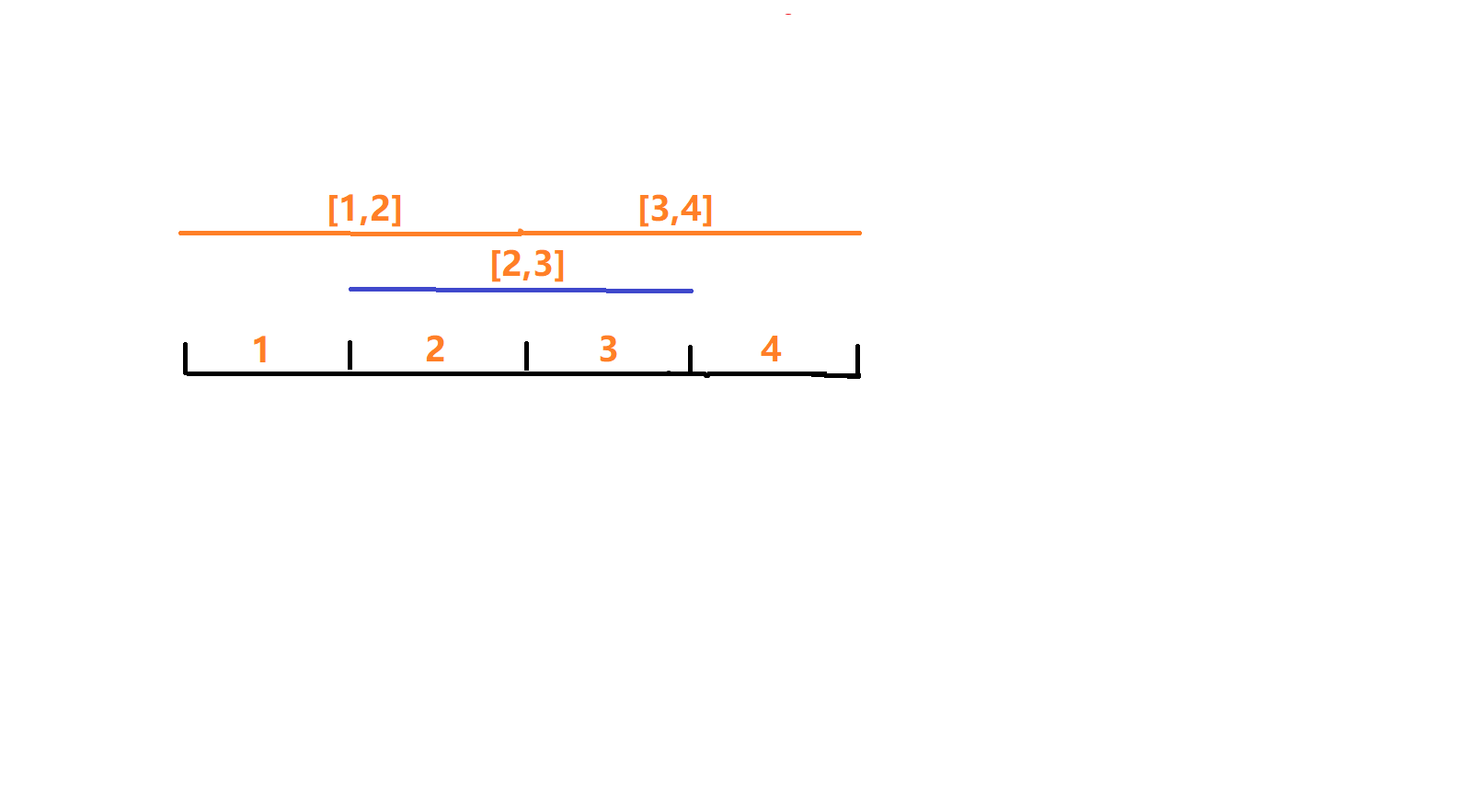Mayor's posters
| Time Limit: 1000MS | Memory Limit: 65536K | |
| Total Submissions: 86291 | Accepted: 24772 |
Description
The citizens of Bytetown, AB, could not stand that the candidates in the mayoral election campaign have been placing their electoral posters at all places at their whim. The city council has finally decided to build an electoral wall for placing the posters and introduce the following rules:
They have built a wall 10000000 bytes long (such that there is enough place for all candidates). When the electoral campaign was restarted, the candidates were placing their posters on the wall and their posters differed widely in width. Moreover, the candidates started placing their posters on wall segments already occupied by other posters. Everyone in Bytetown was curious whose posters will be visible (entirely or in part) on the last day before elections.
Your task is to find the number of visible posters when all the posters are placed given the information about posters' size, their place and order of placement on the electoral wall.
- Every candidate can place exactly one poster on the wall.
- All posters are of the same height equal to the height of the wall; the width of a poster can be any integer number of bytes (byte is the unit of length in Bytetown).
- The wall is divided into segments and the width of each segment is one byte.
- Each poster must completely cover a contiguous number of wall segments.
They have built a wall 10000000 bytes long (such that there is enough place for all candidates). When the electoral campaign was restarted, the candidates were placing their posters on the wall and their posters differed widely in width. Moreover, the candidates started placing their posters on wall segments already occupied by other posters. Everyone in Bytetown was curious whose posters will be visible (entirely or in part) on the last day before elections.
Your task is to find the number of visible posters when all the posters are placed given the information about posters' size, their place and order of placement on the electoral wall.
Input
The
first line of input contains a number c giving the number of cases that
follow. The first line of data for a single case contains number 1 <=
n <= 10000. The subsequent n lines describe the posters in the order
in which they were placed. The i-th line among the n lines contains two
integer numbers li and ri which are the number of the wall
segment occupied by the left end and the right end of the i-th poster,
respectively. We know that for each 1 <= i <= n, 1 <= li <= ri <= 10000000. After the i-th poster is placed, it entirely covers all wall segments numbered li, li+1 ,... , ri.
Output
For each input data set print the number of visible posters after all the posters are placed.
The picture below illustrates the case of the sample input.

The picture below illustrates the case of the sample input.

Sample Input
1 5 1 4 2 6 8 10 3 4 7 10
Sample Output
4
题意:有n块位置固定的海报要往墙上贴,问所有海报贴完之后,能看见几幅海报
题解:海报虽然只有1000块,但是每块海报的长度是在[1,10000000],直接建树查找的话最后一定超时;
所以先离散化处理,将大区间映射到小区间处理,例如:区间[1000,2000],[1990,2012],这里面有四个数
1000,1990,2000,2012;构建映射
1000-0
1990-1
2000-2
2012-3
对于区间[1000,2000],我们用二分查找1000,2000的位置l,r;把要处理的区间[1000,2000]离散成[0,2],在用线段树对区间[l,r]进行覆盖就行
注意:这里处理海报的时候不能当作是点,要当成线段处理,什么意思呢?
举个例子,如果三块海报的张贴位置是[2,3],[1,2],[3,4],(注意顺序)那最后能看见的海报就只有2块,分别是[1,2]和[3,4];
如果三块海报的张贴顺序是[1,2],[2,3],[3,4],最后能看见的海报就是3

#include<iostream> #include<algorithm> #include<string.h> #include<string> #include<stdio.h> using namespace std; int n,cnt,t; int tree[2000005], l[2000005], r[2000005], ans[2000005],vis[2000005]; void pushdown(int num) { if(tree[num]!=-1)//把tree当作lazy用 { tree[num*2]=tree[num]; tree[num*2+1]=tree[num]; tree[num]=-1; } } void update(int num,int le,int ri,int x,int y,int z) { if(x<=le&&ri<=y) { tree[num]=z; return ; } pushdown(num); int mid=(le+ri)/2; if(x<=mid) update(num*2,le,mid,x,y,z); if(y>mid) update(num*2+1,mid+1,ri,x,y,z); } void query(int num,int le,int ri) { if(tree[num]!=-1) { if(vis[tree[num]]==0) { cnt++; vis[tree[num]]=1; } return; } if(le==ri) return; int mid=(le+ri)/2; query(num*2,le,mid); query(num*2+1,mid+1,ri); } int main() { scanf("%d",&t); while(t--) { scanf("%d",&n); int k=0; for(int i=0;i<n;i++) { scanf("%d%d",&l[i],&r[i]); ans[k++]=l[i]; ans[k++]=r[i]; } sort(ans,ans+k); k=unique(ans,ans+k)-ans; int temp=k; for(int i=1;i<temp;i++) { if(ans[i]!=ans[i-1]+1) ans[k++]=ans[i-1]+1; } sort(ans,ans+k); int le,ri; memset(tree,-1,sizeof(tree)); for(int i=0;i<n;i++) { le=lower_bound(ans,ans+k,l[i])-ans; ri=lower_bound(ans,ans+k,r[i])-ans;//upper_bound()返回的是大于r[i]的第一个数 update(1,0,k,le,ri,i+1); } cnt=0; memset(vis,0,sizeof(vis)); query(1,0,k); printf("%d ",cnt); } return 0; } /* input 3 3 5 6 4 5 6 8 3 1 10 1 3 6 10 5 1 4 2 6 8 10 3 4 7 10 output 2 3 4 */